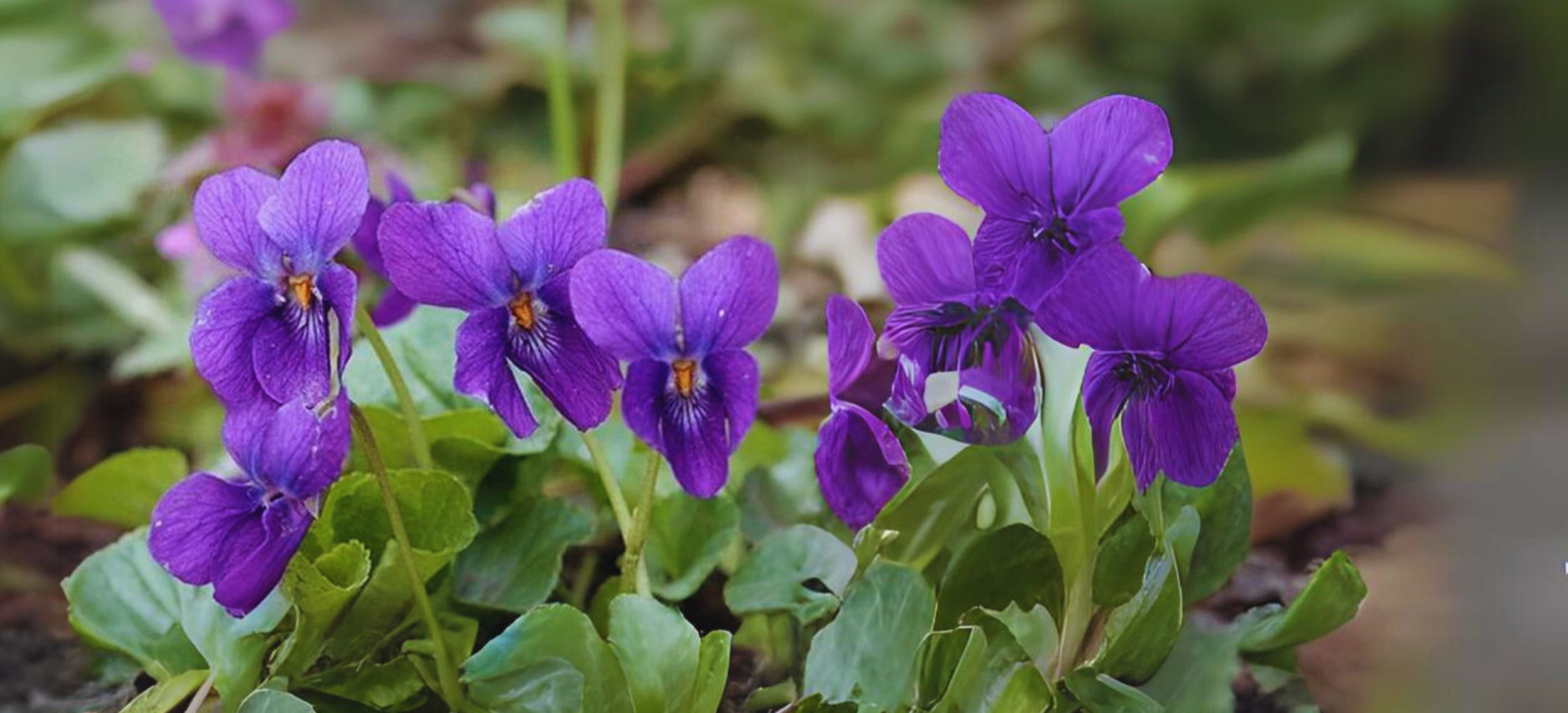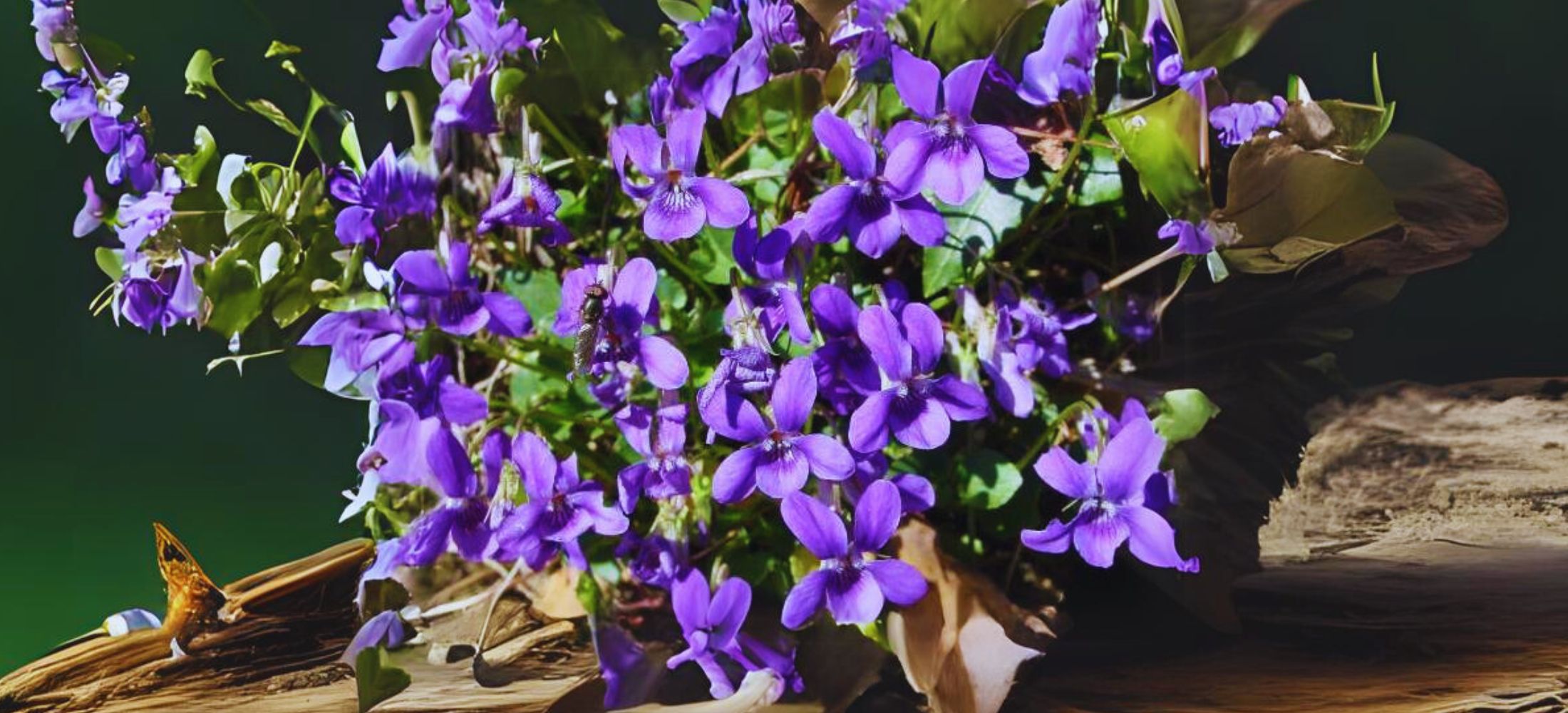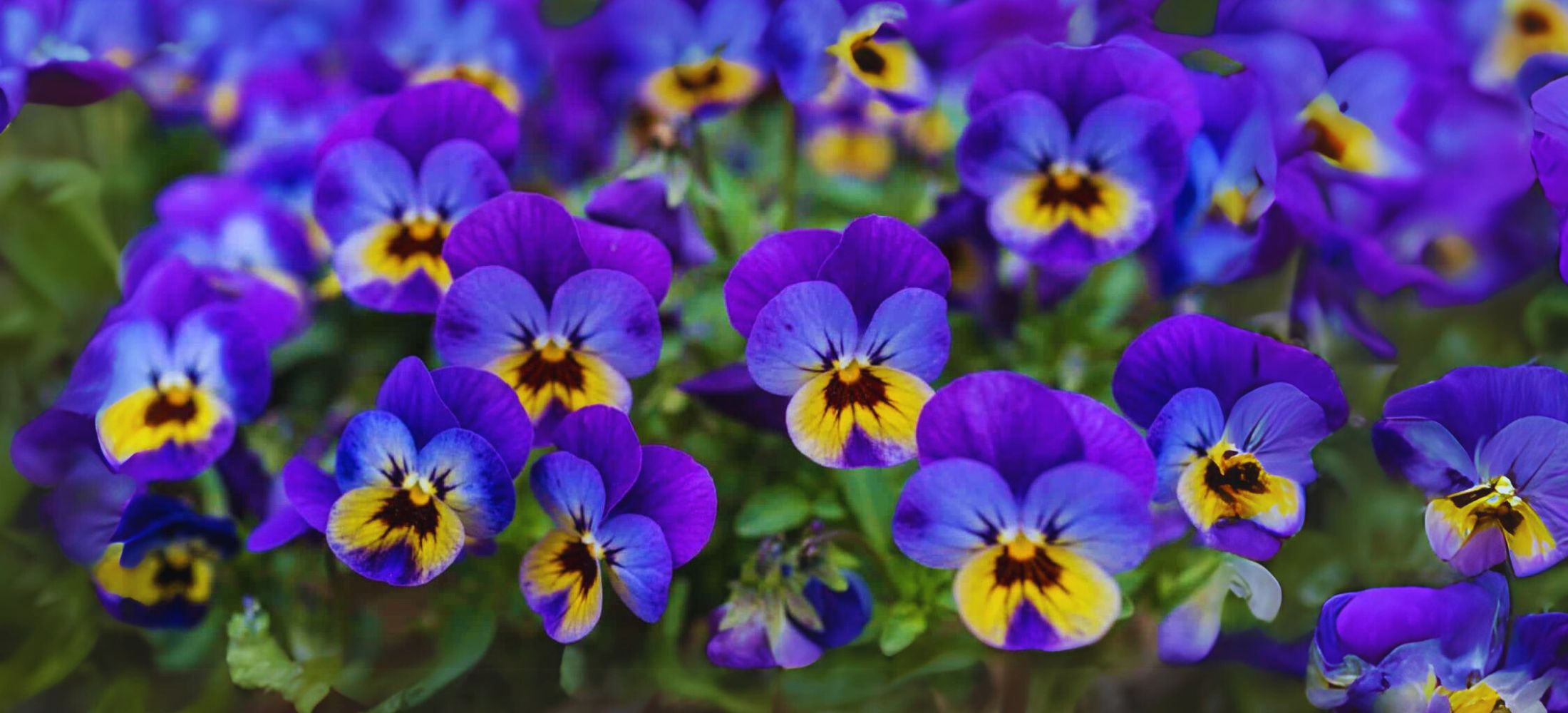Introduction to violet flowers
Violet flowers are a timeless symbol of modesty and love, portraying gardens with their touchy shades and aromatic blooms. These vegetation, a part of the Violaceae circle of relatives, are nearby to temperate areas however have captured the hearts of gardeners globally.
Growing violet flowers is both a pride and a profitable organization, especially while their colorful petals greet you in spring. But to make sure those sensitive flora thrive, one wants to apprehend the requirements of planting and care.
The nice region for them is one wherein they gather three-4 hours of morning daytime but are covered in opposition to the cruel noon solar. Soil awesome has a few different vital elements; it is first-rate in barely acidic to neutral soil with a pH variety of 6.Zero to 7.Zero.
Ensuring the soil is well-draining is fundamental because in reality the plants can not tolerate reputed water, which might also additionally cause root rot. Adding organic don’t forget like compost can improve drainage and soil fertility.
Proper spacing is likewise important to prevent overcrowding and disease. Allow around 6-12 inches among plants, relying on the variety, to promote wholesome airflow and increase.
“The moderate violet flowers teach us that even within the quiet shade, beauty can thrive.”
Timing is likewise important at the same time as planting it. The ideal time to plant is early spring or fall, depending on your neighborhood. Spring planting offers the plant life time to settle in advance than summer season, even as fall planting lets in the roots to set up earlier than wintry climate.
Begin through digging a hollow large enough to deal with the plant’s root ball, making sure that the plant sits at the identical depth as it modified into in its preceding discipline. After putting the plant within the hole, fill it once more with soil and water it deeply to assist settle the roots.
Where to Plant violet flowers
Light Requirements
They are partial coloration fans and may thrive underneath the duvet of taller plant life, making them ideal for forest gardens or under big shrubs. They select obliquely, which enables them to bloom without sizzling their leaves.
Morning daytime is the most useful, at the same time as the extreme afternoon sun needs to be prevented. If your lawn lacks definitely shaded areas, bear in mind putting them close to huge, solar-tolerant flora that can offer safety from direct sunlight hours.
However, be cautious of complete color, as too little daytime can inhibit flowering. Light plays a vital feature in how vigorously your plant will develop and the manner extended their blooming duration lasts. In instances of low mild, do not forget thinning the overhead foliage or moving the plant to a spot with higher right of access to the solar in some unspecified time in the future of morning hours.
“In every sunbeam that filters via the trees, a plant is famous for its mildness.”
Soil and Watering
Soil situations drastically have an impact on the increase of flowers. They thrive in properly-draining, loamy soil wealthy in organic be counted numbers. Amending the soil with compost before planting ensures it has enough vitamins to guide complete lifestyles.
They choose a soil pH amongst 6.Zero and 7.Zero, slightly acidic to independent, which promotes higher nutrient absorption. If your soil is clearly too alkaline, you could decrease the pH via including natural materials like pine needles or peat moss.
Regular watering is critical, particularly throughout dry spells, but they dislike sitting in water. Overwatering can lead to root rot, at the same time as underwatering can motivate leaves to wilt and decrease blooming. A balanced method is to water deeply as quickly as in step with week, ensuring the soil remains wet however now not soggy.
Temperature and Humidity
These plants are first-class nice to cooler climates, with pinnacle-first-class growth taking area at temperatures between 60°F to seventy five°F (15°C to 24°C). Excessive warm temperatures can stunt their growth and reduce flowering, so in hotter climates, offer them with adequate shade and moisture to counteract the results of high temperatures.
Humidity also performs a feature in its care, specifically for indoor kinds like African violet flowers. If you stay in a dry climate, keep in mind misting your plants or using a humidifier to hold awesome growing surroundings. However, avoid placing them in regions with excessive humidity fluctuations, as this may pressure the plant.
“Like the gentle dew on petals, so too ought to we provide care, now not too much, no longer too little.”
Fertilizer and Pruning
Though they now do not require heavy feeding, they benefit from slight fertilization at some point of the developing season. A balanced, water-soluble fertilizer finished each 4-6 weeks is normally enough to preserve your plants health. Over-fertilization, but, can motivate excessive foliage growth and fewer plants, so it’s crucial to look at bundle deal commands cautiously.
Pruning violet flowers encourages more active flowering through the usage of redirecting the plant’s power from seed manufacturing to decrease lower back to blooming. Regularly remove spent flowers and any risky foliage to maintain the plant tidy and healthy. In addition to deadheading, cutting down leggy increase can assist improve airflow throughout the plant, lowering the risk of fungal diseases.
violet flowers Flower Care Tips
Light
They, with their desire for partial coloration, thrive outstanding in dappled daylight hours. While they want to bloom slightly, too much publicity to the sun can cause their leaves to be scorched and stunted. In assessment, too little slight will lessen the amount of plant life they produce. Striking a stability amongst slight and shade is top to developing healthy plants.
Position them in a gap that gets a few hours of morning light, then permit them to rest in the color for a few unspecified times in the future. If planting interior, place the pot close to a splendid window however make certain the moderate is indirect to prevent harm to the leaves. By information about their natural habitat, you in all likelihood can recreate best developing conditions and make sure lively flowering.
Soil and Water
The proper soil is vital for cultivating strong, colorful plants. These vegetation thrive in nicely-draining soil that is rich in natural rely. The soil wants to hold moisture without becoming waterlogged, as they are at risk of root rot in soggy conditions. Loam soil, enriched with compost or well-rotted manure, gives the ideal stability of nutrients and drainage.
Keeping the soil continuously moist however in no manner soaking moist is the important element to success. Water them deeply, allowing the roots to absorb moisture at the same time as stopping the soil from drying out sincerely between watering durations. Using mulch across the bottom of the plant also can help maintain moisture, particularly at some stage in heat or dry spells.
“A garden that is tended with care displays in each drop of water, nourishing every touchy petal.”
Temperature and Humidity
They are cool-climate fanatics and like a temperature variety of 60°F to seventy five°F (15°C to 24°C). They dislike immoderate warmth, and extended exposure to temperatures above 80°F can cause them to stop blooming and become pressured. In cooler climates, they will bloom greater profusely, but in warmer regions, they take advantage of being planted in shaded areas that provide respite from the solar’s immoderate warmth.
They additionally understand moderate humidity, and indoor sports, along with African, thrive first-rate in environments with a chunk of moisture within the air. If your home is dry, especially in wintry climate, the usage of a humidifier or misting the flowers lightly ought to make all the difference in their health and flower production.
Fertilizer and Pruning
Although it is fairly low-maintenance, offering them with the proper nutrients can drastically affect their growth and flowering functionality. Use a balanced, sluggish-launch fertilizer at some point of the developing season to feed the plant life each four to 6 weeks.
Over-fertilizing can cause an extra leafy growth at the fee of plants, so it’s critical to take a look at package deal instructions and keep away from overfeeding. Pruning is another way to maintain a wholesome plant. Deadheading, or disposing of spent flora, encourages the plant to redirect its strength into generating new blooms. Regularly trimming away any dead or diseased leaves also permits the plant to stay healthy and colorful.
Types of violet flowers
Sweet violet flowers (Viola odorata)

The Sweet violet flower, as its call shows, is understood for its delightful perfume and fascinating pink flora. This species, often utilized in perfumery and culinary creations, is local to Europe however has spread the world over because of its recognition. Sweet violet flowers are low-growing perennials that thrive in partial shade and moist, nicely-draining soil.
They are best for woodland gardens, in which their dainty blooms can carpet the floor in early spring. In addition to their aesthetic appeal, Sweet violet flowers have a long record in conventional remedies and may be used to make syrups, teas, or even soothing pores and skin balms.
However, irrespective of their many uses, it’s vital to bear in mind that ingesting large quantities of Sweet violet flowers leaves or plant life can cause mild gastrointestinal disappointment in every person and animal, so moderation is the pinnacle.
Dog violet flowers (Viola riviniana)

Dog violet flowers are a commonplace range observed for the duration of Europe, thriving in woodland and grassland regions. Unlike the Sweet violet flowers, the Dog violet flowers lack a robust perfume, however it makes up for it with its hardiness and simplicity of care. This species grows well in sunny and shaded regions, making it a flexible addition to any garden.
Dog violet flowers produce touchy red-blue vegetation that bloom in spring and entice an entire lot of pollinators, which encompass bees and butterflies. These violet flowers are non-invasive and can be used to create naturalistic planting schemes, mixing seamlessly into the landscape. While typically non-poisonous, as with any plant life, it is clever to preserve them out of the reap of pets to avoid accidental ingestion.
African violet flowers (Saintpaulia)

African violet flowers, regardless of the fact that they are not actual violet flowers, are cherished houseplants diagnosed for their fuzzy leaves and colorful blooms. Native to the tropical regions of East Africa, they may be a piece extra touchy than their outdoor opposite numbers and require specific care to thrive indoors. These plant life choose superb, oblique mild, nicely-draining soil, and normal watering to prevent each over- and underneath-watering
African violet flowers are available in a wide shape of colors, together with red, red, and white, making them a famous choice for indoor gardens. They are also non-poisonous to people and pets, making them regular for families with youngsters or animals. However, they do require a bit more interest in the element as regards humidity and temperature control.
Are violet flowers Harmful to Humans or Animals?
Violet flowers are typically strong for people and pets, but as with each plant, moderation is important. Some species, together with Sweet violet flowers (Viola odorata), are even utilized in culinary applications like making syrups and candies. However, eating huge quantities of violet flowers, leaves or plants can cause a slight belly disenchanted, especially in youngsters or pets.
African violet flowers, notwithstanding their call, aren’t toxic to human beings or animals and may be well grown indoors without fear. Dog violet flowers, while non-toxic, need to nonetheless be stored out of acquisition of pets, as ingestion of big quantities may additionally reason digestive soreness.
Conclusion
In the end, violet flowers are a remarkable addition to any garden, offering several hues, textures, or maybe fragrances. By statistics of their particular soil, soil, and care desires, you can enjoy a flourishing violet flowers garden or indoor show for future years. With their wealthy records, range, and clean splendor, violet flowers genuinely deserve a place in every.
Read more: Comprehensive Guide to Growing Larkspur Flowers for Gardners










1 thought on “How to Grow violet Flowers: A comprehensive guide”